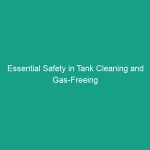Introduction
Good morning team! Today, we’re diving into an important topic that often gets overlooked in Workplace Safety discussions—spider Safety. While spiders can be beneficial to our Environment, certain species pose risks that we need to be aware of, especially in our working environments. Understanding these risks is crucial for maintaining a safe workplace and ensuring everyone’s well-being.
In this Toolbox Talk, we will discuss must-know spider Safety tips to help you avoid potential Hazards and stay safe while working. Let’s get started!
Understanding Spider Safety in the Workplace
Spider safety refers to the Precautions and practices we can implement to minimize the risks associated with spider bites and infestations in our workplace. The importance of spider safety cannot be overstated, as some spider species, such as the black widow and brown recluse, can deliver venomous bites that may lead to serious health complications.
It’s crucial to recognize that most spiders are harmless and even beneficial, as they help control pest populations. However, we must stay vigilant and informed about the spider species that pose risks to our health. Misconceptions about spiders can lead to fear and unnecessary panic, so let’s clarify the facts.
Key Hazards, Risks, and Safety Considerations
In any workplace, the presence of spiders can create several hazards:
- Venomous Bites: Certain spiders can deliver venomous bites that may require medical attention. It’s essential to know which spiders are present in your area and their potential risks.
- Allergic Reactions: Some individuals may have allergic reactions to spider bites, leading to symptoms ranging from mild irritation to severe anaphylactic reactions.
- Infestations: A significant spider population can indicate other pest issues, which might affect the overall hygiene and safety of the workplace.
If left unaddressed, these hazards can result in serious consequences, including medical emergencies and loss of productivity. Therefore, understanding how to identify and mitigate spider-related risks is a key part of our safety protocol.
Best Practices, Procedures, & Actionable Advice
Here are some essential spider safety tips that everyone should follow:
1. Identify Common Venomous Spiders
Know the species of spiders that may be present in your workplace. Some common venomous spiders include:
- Black Widow: Recognizable by its glossy black body and red hourglass marking on the abdomen.
- Brown Recluse: Light brown with a violin-shaped marking on its back.
2. Maintain a Clean Work Environment
Regular cleaning and Maintenance can significantly reduce spider habitats:
- Keep work areas tidy and free of clutter.
- Seal up cracks and crevices where spiders might enter.
- Regularly remove webs and egg sacs.
3. Use Personal Protective Equipment (PPE)
When working in areas prone to spider activity, consider wearing gloves and long sleeves to minimize the risk of bites.
4. Educate Your Team
Conduct Training sessions on spider recognition and safety Procedures. Ensure everyone knows how to react in case of a spider bite.
5. Report Spider Sightings
If you encounter a spider, report it immediately. This will allow us to take appropriate action, such as identifying and removing the spider or sealing entry points.
Case Study: Spider Bite Incident
Let’s take a moment to review a real-world incident. In a warehouse setting, an employee was bitten by a brown recluse spider while clearing out a storage area. Due to a lack of awareness and proper Safety Measures, the bite led to severe complications, requiring hospitalization. This situation could have been avoided with proper education, awareness, and proactive safety practices.
Regulations, Standards, and Compliance
Adhering to safety Regulations is critical in minimizing workplace hazards, including those posed by spiders. Familiarize yourself with the relevant OSHA Standards and any company-specific safety protocols. Compliance not only protects you but also safeguards your colleagues and the overall workplace environment.
Employee Engagement & Discussion
Now that we’ve covered important spider safety tips, let’s open the floor for discussion. What safety challenges have you encountered related to spider safety? Are there any particular concerns or experiences you’d like to share?
Conclusion & Key Takeaways
In conclusion, spider safety is a vital aspect of our Workplace Health and safety protocols. By understanding the risks, recognizing common venomous spiders, and following Best Practices, we can create a safer environment for everyone. Remember, safety is a shared responsibility, and your awareness and proactive measures can make a significant difference.
Thank you for your attention and commitment to maintaining a safe workplace. Let’s prioritize safety and ensure that we all feel secure while doing our jobs!


